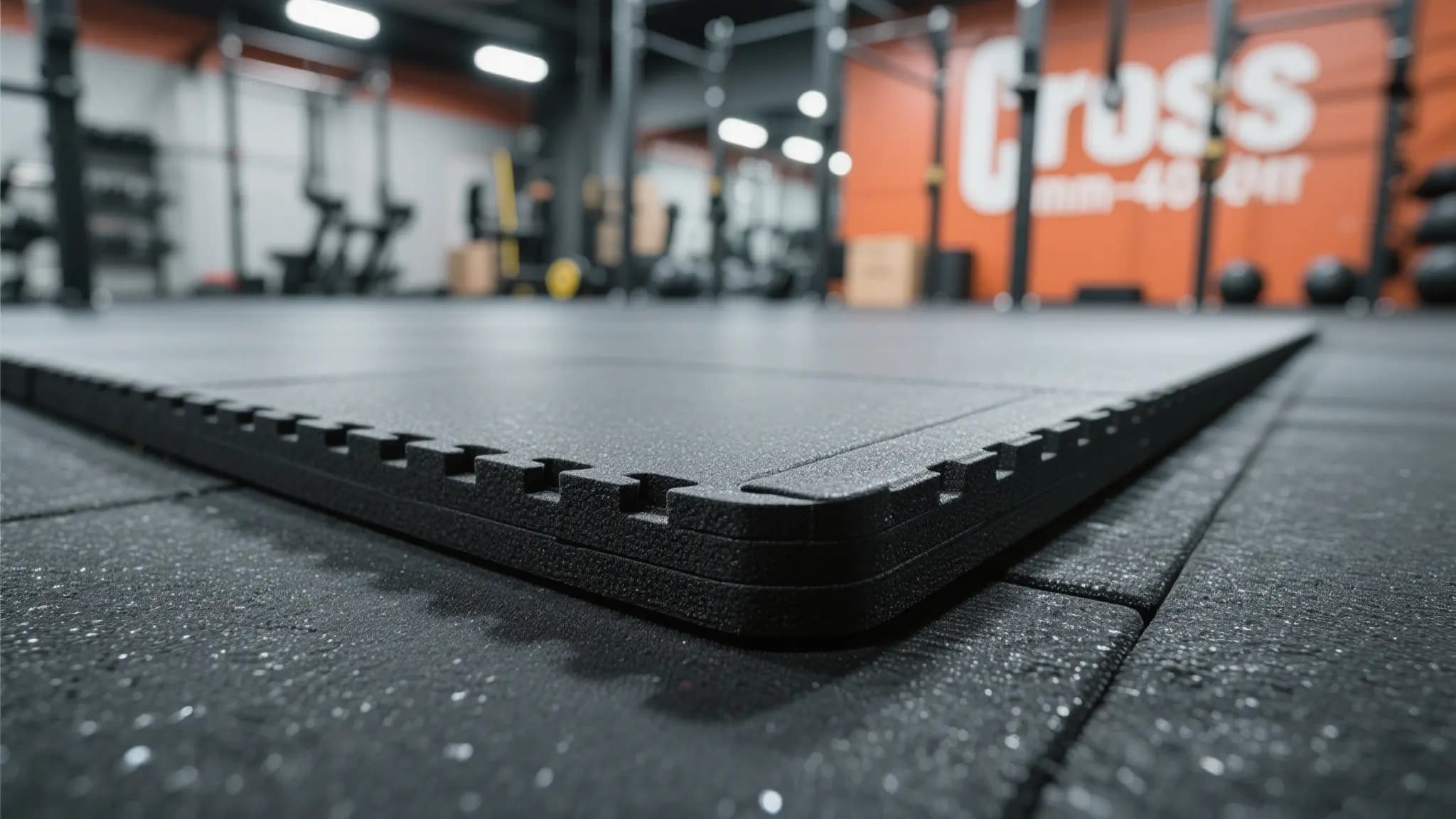Why Does Thickness Matter in Rubber Gym Flooring?
Choosing the right thickness for rubber gym flooring is critical for safety, durability, and comfort. The thickness affects shock absorption, noise reduction, and equipment protection. Different gym environments require varying thicknesses to meet the demands of their activities.

Standard Thickness Options for Rubber Gym Flooring
Rubber gym flooring typically comes in thicknesses ranging from 6mm to 30mm. Each thickness range serves different purposes:
- 6mm to 8mm: Suitable for light exercise areas, yoga studios, and cardio zones where heavy impact is minimal.
- 10mm to 15mm: Ideal for commercial gyms, general workout areas, and group fitness rooms with moderate weight training.
- 20mm to 30mm: Best for heavy-duty applications like CrossFit boxes, free weight zones, and areas with frequent weight drops.
Factors to Consider When Choosing Thickness
Beyond general guidelines, several factors influence the ideal thickness for your rubber flooring:
- Type of Activity: Heavy weightlifting requires thicker flooring for shock absorption and equipment protection.
- Subfloor Type: Concrete floors might need thicker mats for better cushioning compared to wooden subfloors.
- Noise Reduction: Thicker flooring reduces impact noise, especially in multi-level facilities.
- Budget Constraints: Thicker mats cost more, so balancing cost and performance is essential.
Common Rubber Gym Flooring Types and Their Thickness
Different rubber flooring products offer distinct thickness options:
- Rubber Tiles: Usually available from 6mm to 25mm, suitable for customizable gym layouts.
- Rolled Rubber Flooring: Typically 4mm to 10mm thick, ideal for cardio areas and lighter activities.
- Rubber Mats: Can be 20mm or thicker, perfect for weightlifting platforms and high-impact zones.
Tips for Sourcing Rubber Gym Flooring from Suppliers
When purchasing rubber gym flooring, especially from international suppliers, consider these points:
- Request samples to verify thickness and material quality.
- Ensure certifications like ISO and SGS for product safety and consistency.
- Discuss installation requirements—thicker floors may need specialized adhesives or underlays.
- Confirm warranty terms related to wear and tear based on thickness.
Conclusion
Selecting the right thickness for your rubber gym flooring ensures optimal performance, safety, and longevity. Assess your gym’s activities, subfloor, and budget carefully to make the best choice. For heavy-impact zones like CrossFit or free weight areas, thicker flooring (20mm+) is recommended, while lighter areas can use thinner options.
Interested in premium rubber gym flooring with customizable thickness? Contact us today to explore options that suit your facility’s needs.
